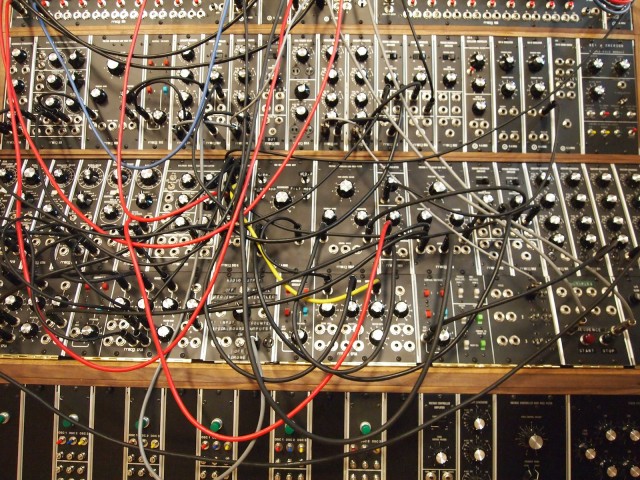It started as an April Fools’ Joke. Then it turned out to be real. But with plenty of new instruments to work on, why would Moog remake a dinosaur – both in form and literal size?
Engineer Gene Stopp doesn’t blink when asked that question. In a tour of the modular for me and Keyboard Magazine – a magazine whose very existence is partly indebted to the legacy of Keith Emerson and Moog – he was confident.
Do this once, and no one can ever question whether you know what it means to make a real, exact replica of the original. In fact, it was amusing to me that people were complaining about the absence of sound samples. You’ve heard them, if you’ve ever heard Keith Emerson.
And he talks about what it could mean for the future of Moog that they’ve accomplished this “resurrection.” Rosser Douglass, who worked on the project, as well, chimes in in the background.
Listening to Rosser and Gene might still fail to convince you that sourcing a bunch of original parts to remake the Emerson modular is a good idea. But you can at least understand what was in their heads as they did it. And the experience may prove to be a seminal one for Moog going forward, in ways the company itself could still be figuring out.
Wheeling the behemoth out on the show floor, Gene and Rosser also gave me a tour for Keyboard of the innards and a module-by-module rundown of what’s there. Interestingly, in the end there weren’t any components that were so hard to source. Those that were – knob caps – could be replaced by 3D printing. That to me is an encouraging sign for the longevity of analog designs.
Synthtopia and Sound on Sound‘s Gordon Reid had more fortune than I did in getting access to the modular, and actually did get to make some sounds. (Cough, you lucky bastards.) Gordon did a wonderful job of doing what even Emerson didn’t – he yanks the cables and gets to drive this thing as a modular, producing new patches from scratch. Worth watching this video alongside the other, as between them, you get a pretty complete picture:
To anyone complaining that this is all overly obsessed with the past, I’d say – don’t worry too much. Moogfest was still full of new ideas. Moog’s Cyril Lance was quick to point to new creations in our panel, including the digital Theremini and iPad-based Animoog. And boutique modular makers told me they welcomed the Emerson modular – even one making faux-Moog modules – as it added to the credibility of their field and added still more attention and demand. Those builders are limited only by what fits in a rack: some creations hew closely to the Moog original template, and some vary wildly.
So, if the past is the future, the future is the future, too. And in the end, both endeavors have the same motivation: why not? Those two words continue to inspire some great musical invention.
